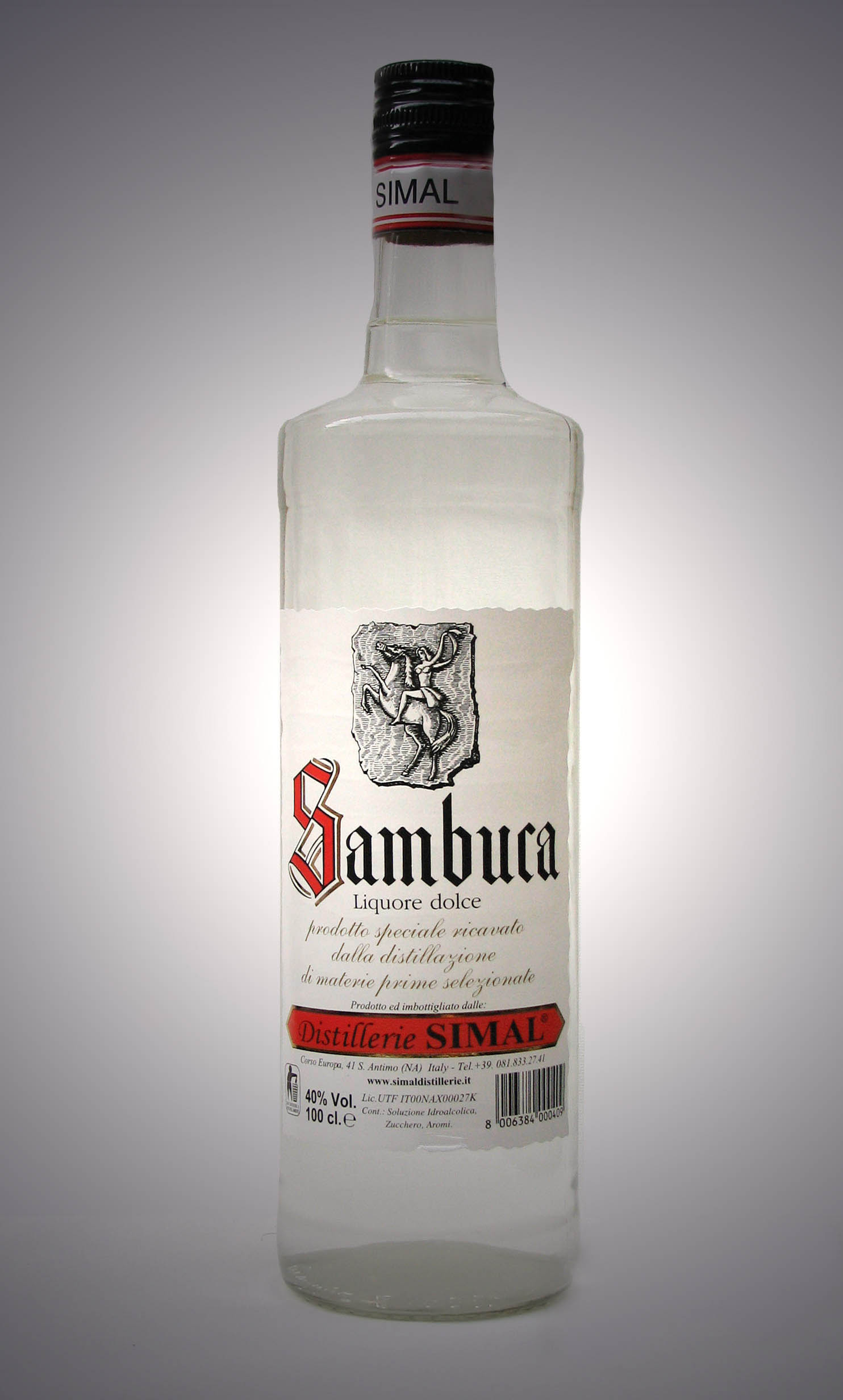Sambuca on:
[Wikipedia]
[Google]
[Amazon]
 Sambuca () is an Italian anise-flavoured
Sambuca () is an Italian anise-flavoured
 Sambuca () is an Italian anise-flavoured
Sambuca () is an Italian anise-flavoured liqueur
A liqueur ( , ; ) is an alcoholic drink composed of Liquor, spirits (often rectified spirit) and additional flavorings such as sugar, fruits, herbs, and spices. Often served with or after dessert, they are typically heavily sweetened and un-age ...
. Its most common variety is often referred to as "white sambuca" to differentiate it from other varieties that are deep blue ("black sambuca") or bright red ("red sambuca"). Like other anise-flavoured liqueurs, the ouzo effect is sometimes observed when combined with water.
Ingredients
Sambuca is flavoured withessential oil
An essential oil is a concentrated hydrophobic liquid containing volatile (easily evaporated at normal temperatures) chemical compounds from plants. Essential oils are also known as volatile oils, ethereal oils, aetheroleum, or simply as the ...
s obtained from star anise, or less commonly, green anise. Other spices such as elderflower
''Sambucus'' is a genus of between 20 and 30 species of flowering plants in the family Adoxaceae. The various species are commonly referred to as elder, with the flowers as elderflower, and the fruit as elderberry.
Description
Elders are mostl ...
, liquorice and others may be included but are not required as per the legal definition. It is bottled at a minimum of 38% alc/vol. The oils are added to pure alcohol, a concentrated solution of sugar
Sugar is the generic name for sweet-tasting, soluble carbohydrates, many of which are used in food. Simple sugars, also called monosaccharides, include glucose
Glucose is a sugar with the Chemical formula#Molecular formula, molecul ...
, and other flavours.
History
The term comes from theLatin
Latin ( or ) is a classical language belonging to the Italic languages, Italic branch of the Indo-European languages. Latin was originally spoken by the Latins (Italic tribe), Latins in Latium (now known as Lazio), the lower Tiber area aroun ...
word ''sambucus'', meaning ' elderberry'. The word ''sambuca'' was first used as the name of another elderberry liquor that was created in Civitavecchia around 1850 by Luigi Manzi.
Serving
Sambuca may be served neat. It may also be served on the rocks or with water, resulting in the ouzo effect from the anethole in the anise. Like other anise liqueurs, it may be consumed after coffee as an (Italian: "coffee-killer") or added directly to coffee in place of sugar to produce a (Italian: "corrected coffee"). A serving of sambuca can be a shot with seven coffee beans, representing the seven hills of Rome. Likewise, a shot with one coffee bean, called , (Italian: "with the fly"), is as common. The traditional serving is with three coffee beans, each representing health, happiness and prosperity. The shot may be ignited to toast the coffee beans with the flame extinguished immediately before drinking. Sambuca is also used in cooking, in small amounts because it has a strong flavour. It is usually used in desserts and seafood recipes.See also
* List of anise-flavored liqueursReferences
{{Alcoholic beverages Anise liqueurs and spirits Italian liqueurs Shooters (drinks)